Use the Biggy Web App
AI Incident Assistant, also known as BigPanda Biggy, brings you AI-powered incident management by uncovering hidden data, transforming it into insights, and delivering it in natural language. Accelerate incident investigation as Biggy combs through infrastructure data and knowledge to surface highly relevant insights that help the team collaborate, investigate incidents, and create post-incident analyses.
The Biggy Web App allows you to easily configure Biggy and view deep reporting insights. Admins can use this page to customize workflows and find ways to improve existing configurations.
Web App Sections
The Biggy web app is divided into the following sections:
Chat - have a conversation with Biggy right within the web app.
Analytics - view insights into how your organization interacts with Biggy.
Dashboards - interact with incident reports and meeting transcripts.
Configuration - customize Biggy and integrate your tools.
Workflows - set up agentic workflows based on keywords or schedules.
Learning - manage insights Biggy learns from user feedback
Context and Data - manage indexing settings, data, and documents.
Guides and Resources - walk through guided onboarding and find helpful information for using Biggy.
Access Controls - manage user accounts and roles.
Dark and Light Mode - adjust how the web app looks.
Profile and Preferences - manage personal information and account preferences.
Access the Biggy Web App
You can access the Biggy Web App at https://app.biggy.io.
You'll be prompted to choose how you'll sign in.
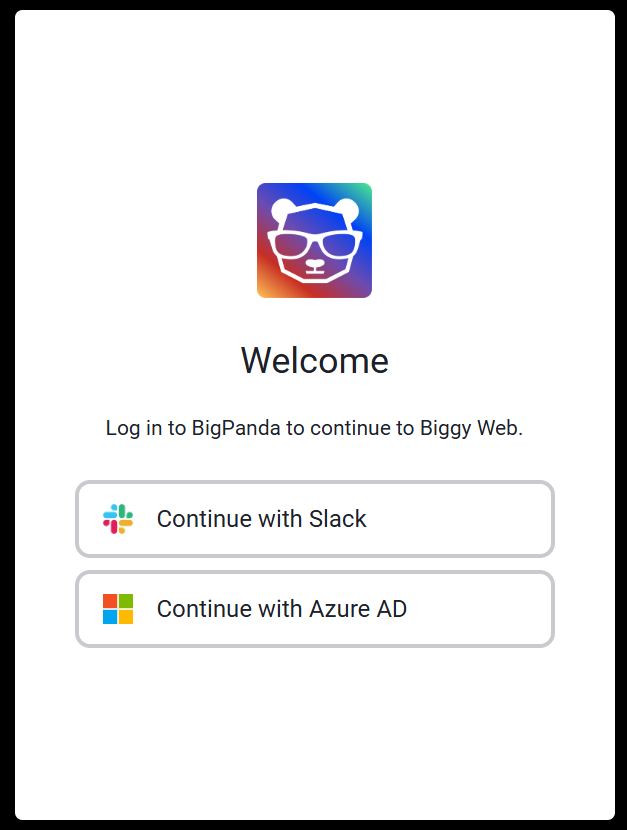
If you use Slack, select Continue with Slack. If you use MS Teams, select Continue with Azure AD. Follow the instructions to sign in to your account.
Biggy Web App Home Page
After signing in to the web app, you are directed to the Home page.
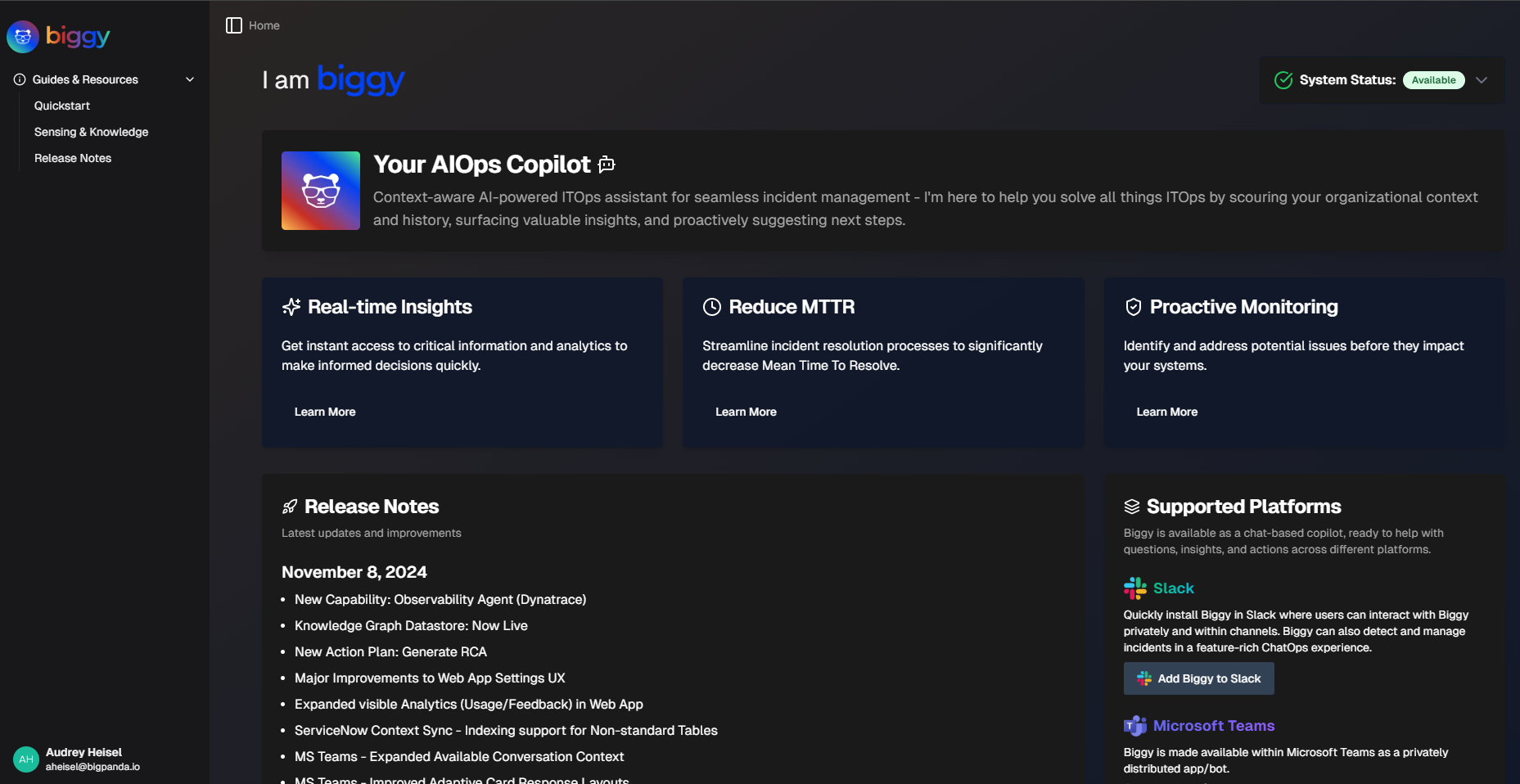
On the Home page, you can view general information about Biggy, the latest release notes, and the current Biggy System Status.
You can always return to the Home page by clicking the Biggy icon in the top left corner of the Web App screen.
Chat
The Chat module allows you to have a conversation with Biggy right within the web app. Within the Biggy Chat page, you can ask Biggy a question, ask it to generate a diagram, or upload CSV or Word documents for Biggy to analyze in real time.
The Chat module works well for searching and asking questions, as there are several advanced chat and response types to choose from.
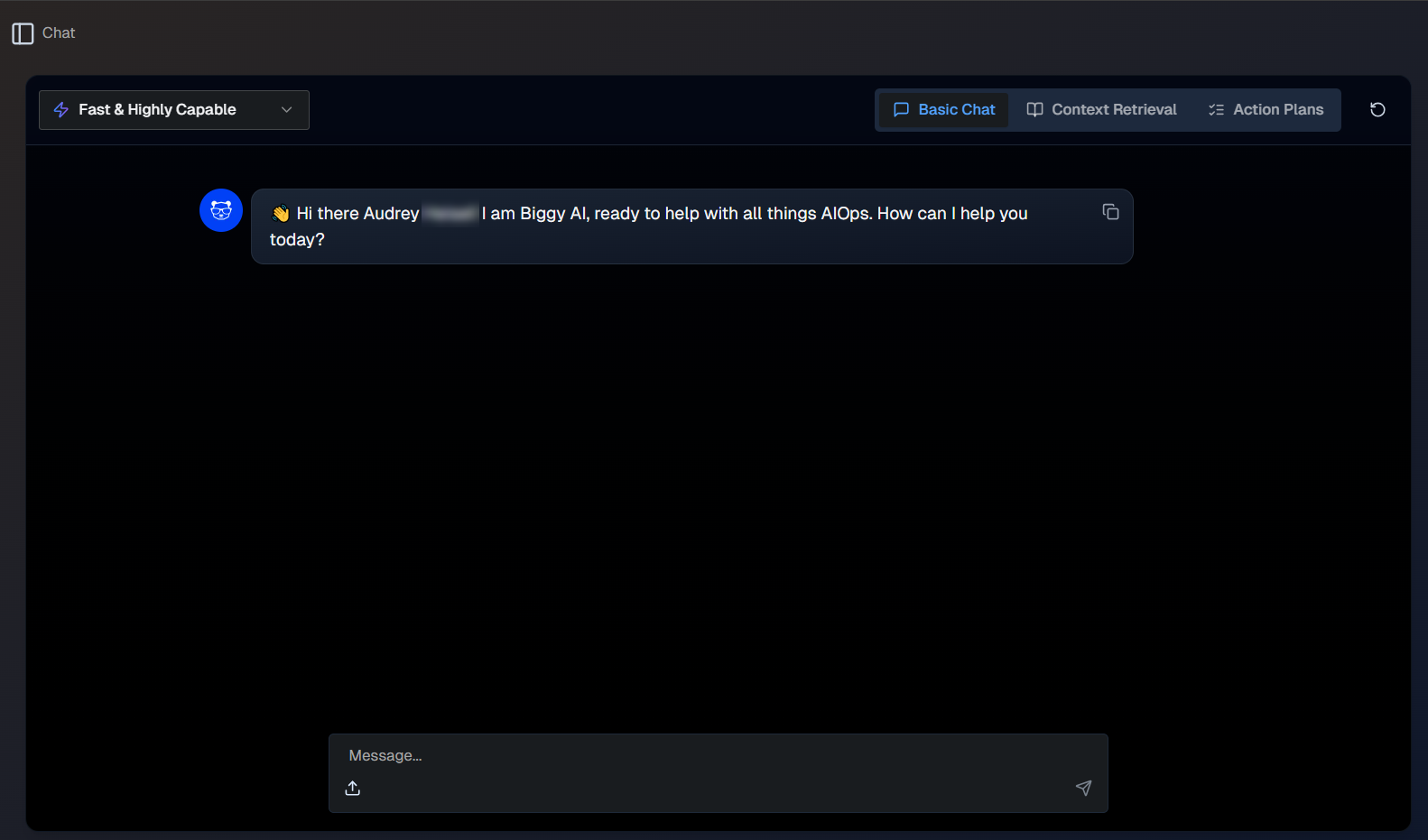
Biggy Chat
There are two web chat types available. At the top right of the Chat screen, select one of the following chat types:
Basic - A standard chat experience with an ITOps-oriented model. Use this option to ask general questions and analyze documents.
Biggy Agent - Can use integrations, full organizational context, and action plans to answer queries. This chat type can access multiple action plans within the same query.
Response styles inform how Biggy answers your query. At the top left of the Chat screen, select one of the following response types from the drop-down menu:
Fast & Highly Capable - Generates a fast, in-depth summary.
Basic Reasoning - Uses more reasoning than Fast & Highly Capable. Takes a little longer to generate.
Deep Reasoning - Uses the highest amount of reasoning and takes the longest amount of time to generate.
Biggy Agent
The Biggy Agent model uses the response style that works best for the action plan associated with the query.
Chat Presets
Create chat presets for queries that you frequently use with the Biggy web chat. Use private presets for personal workflows, or public to share with your organization.
For example, if you ask for a report on a weekly basis, you can create a preset for that query so that you don't need to retype it each time.

When interacting with the Biggy web chat, go to the bottom left corner and click the + button to select a preset from the list. The preset text will appear in the Biggy web chat text box.
Edit a preset
After you select a preset, you will have a chance to edit the content before you send the query.
For example, if you create a preset with placeholder names, you can edit those before sending the query to the Biggy web chat.
Create a Preset
To create a new preset:
In the Biggy web chat, go to the bottom left corner and click the + icon.
In the Chat Presets window, click Create or New.
In the Create Chat Presets window, populate the following:
Field
Description
Preset name
Descriptive name for the chat preset.
Visibility
Select who can see the preset. The following options are available:
Private - only visible to you.
Public - visible to everyone in your organization.
Preset Instructions
The query used in the preset.
Use the Generation Mode button to allow Biggy to generate a prompt based on your input.
Click Save Preset.
Manage Presets
To edit a preset, hover over it and click the Pencil icon. Adjust fields in the Edit Chat Preset screen, and click Save Changes.
To permanently delete a preset, hover over it and click the Trash can icon.
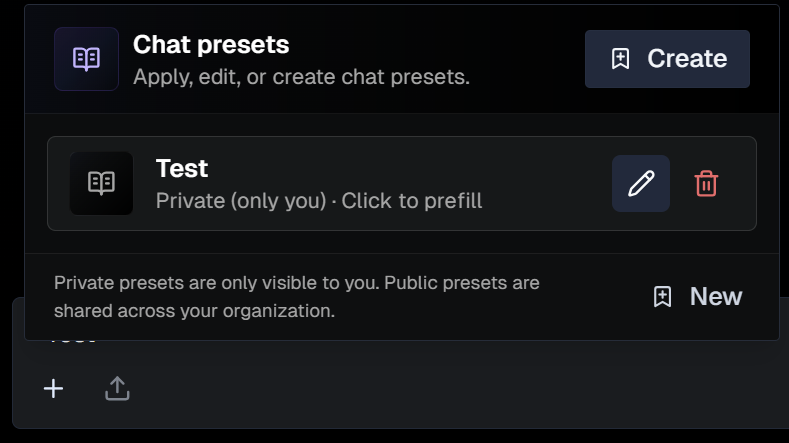
Copy or Download Messages
You can copy or download a Word document of any message in the web chat conversation. Hover over a message and click the Copy icon or the Download icon.

Tables
If Biggy generates a table as part of the response, you can select Download as CSV to export the table.
Chat History
To view recent Biggy Agent web chat conversations, select Chat History.
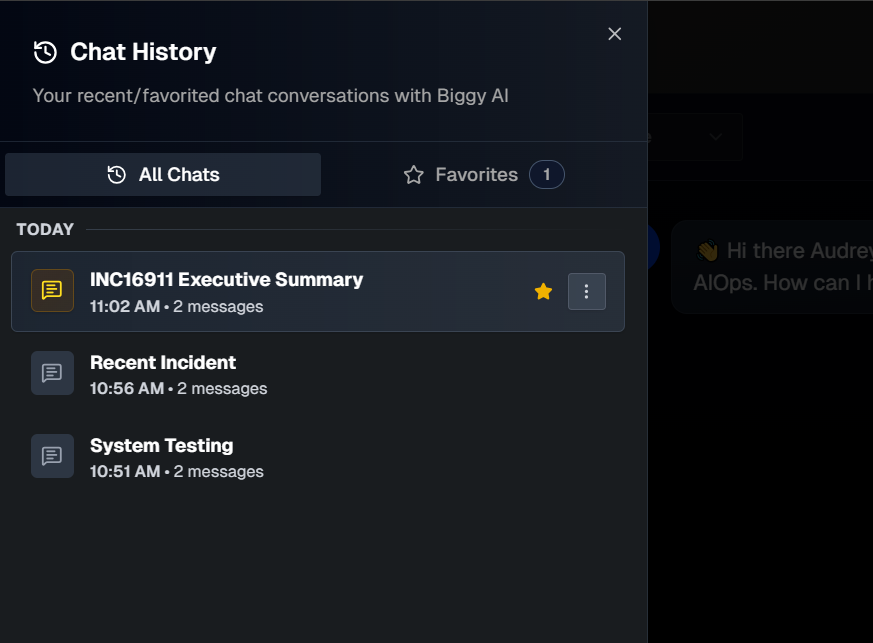
The All Chats tab automatically opens. Click any chat to open the full conversation.
If there's a conversation you'd like to save for easy access, click the Star icon to add it to the Favorites tab.
Biggy automatically generates a title for each conversation. To change the title, click the three dots icon and select Rename. Enter a new title and click the green check mark to save.
To permanently delete a conversation, click the three dots icon and select Delete.
Analytics
The Analytics module of the Biggy Web App gives you insights into how your organization is interacting with Biggy.
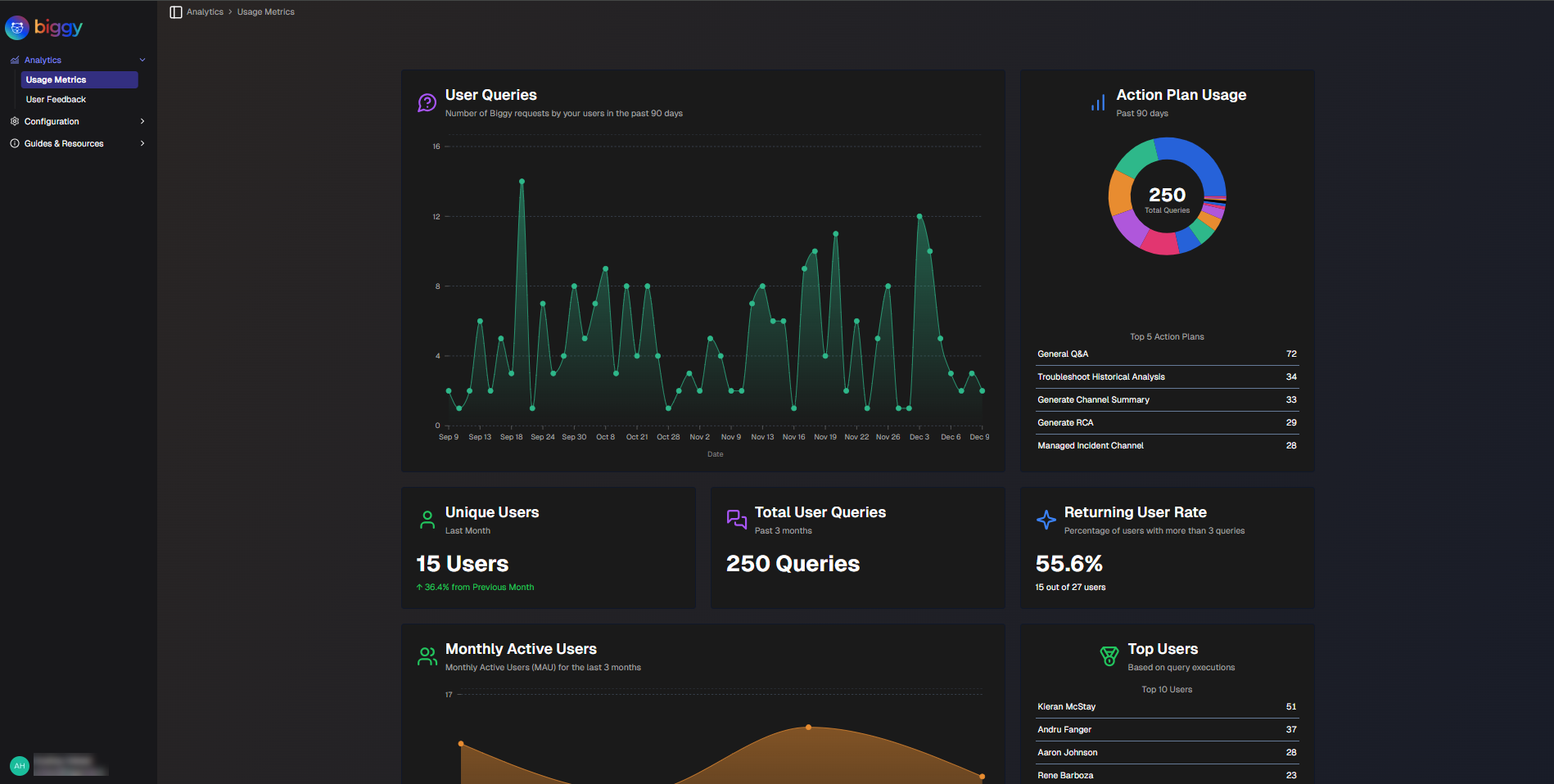
The Analytics module contains the following sections:
Usage Metrics - Information on who is using Biggy and how they're interacting with it.
User Feedback - Details about the feedback your users gave to Biggy's query responses.
Change Risk Analytics - High-level analysis of changes in your IT environment for a specific time period. This section is only available if your organization has the AI Incident Prevention module.
Workflow Executions - Usage details about workflows that trigger from new messages in your chat channels.
Biggy API Usage - Details about how your organization is using the Biggy API.
Guardrail Violations - Information about blocked queries and the effectiveness of the content filter.
For more information, see the Manage Biggy Analytics documentation.
Dashboards
The Dashboards module allows you to view and customize incident reports that were generated by Biggy using the Generate Incident Report or Managed Incident Channel action plans.
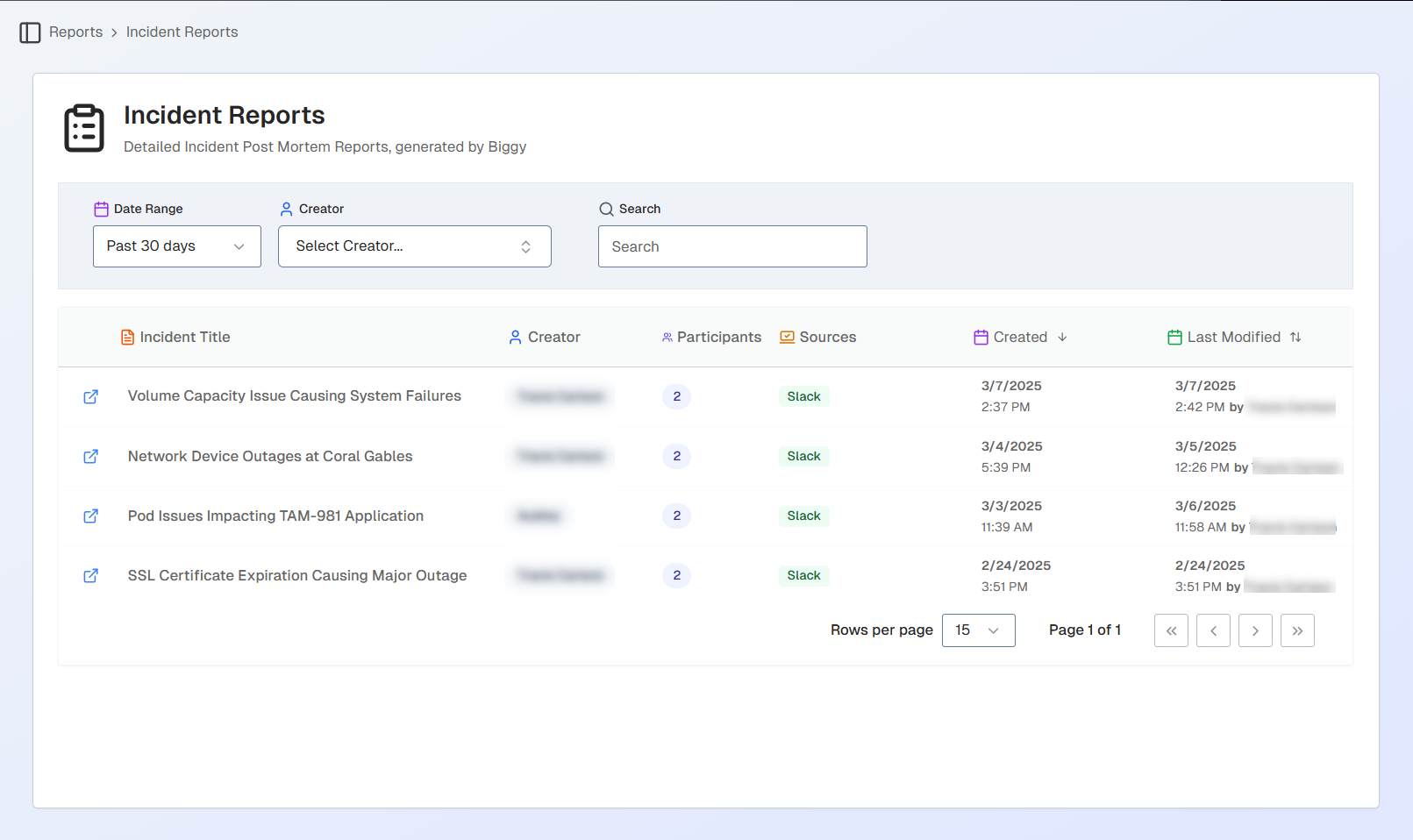
See the Manage Biggy Dashboards documentation for more information.
Configuration
The Configuration module allows you to customize Biggy to meet your organization's workflows.
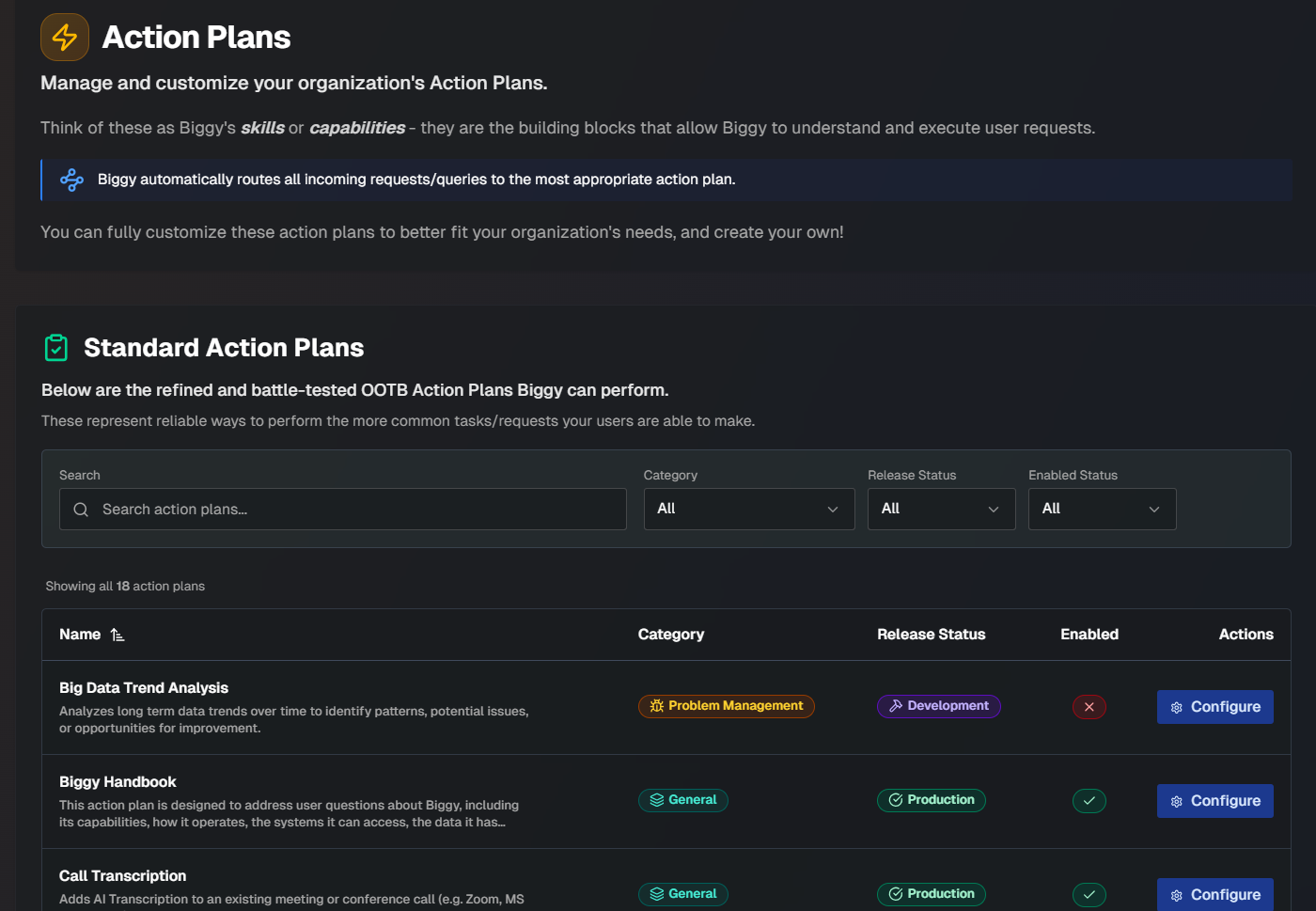
In this module, you can view and customize configurations related to:
General Settings - Configure whether guided onboarding is required, create teams, and set up preferences related to the LLM.
Action Plans - Customize how Biggy behaves during specific scenarios.
Integrations - Connect the tools that Biggy can access information from in real-time.
Core BigPanda - Manage your integration with the BigPanda core platform.
Acronym Maps - Map your organization's commonly used acronyms to their full name and definition, giving Biggy more context to improve responses.
See the Manage Biggy Configuration and Action Plans documentation for more information.
Workflows
The Biggy Workflows module within the web app allows you to create channel hawks and scheduled workflows. These allow you to set up agentic workflows that occur either when a specific word or phrase is detected, or on a specific schedule that you configure.
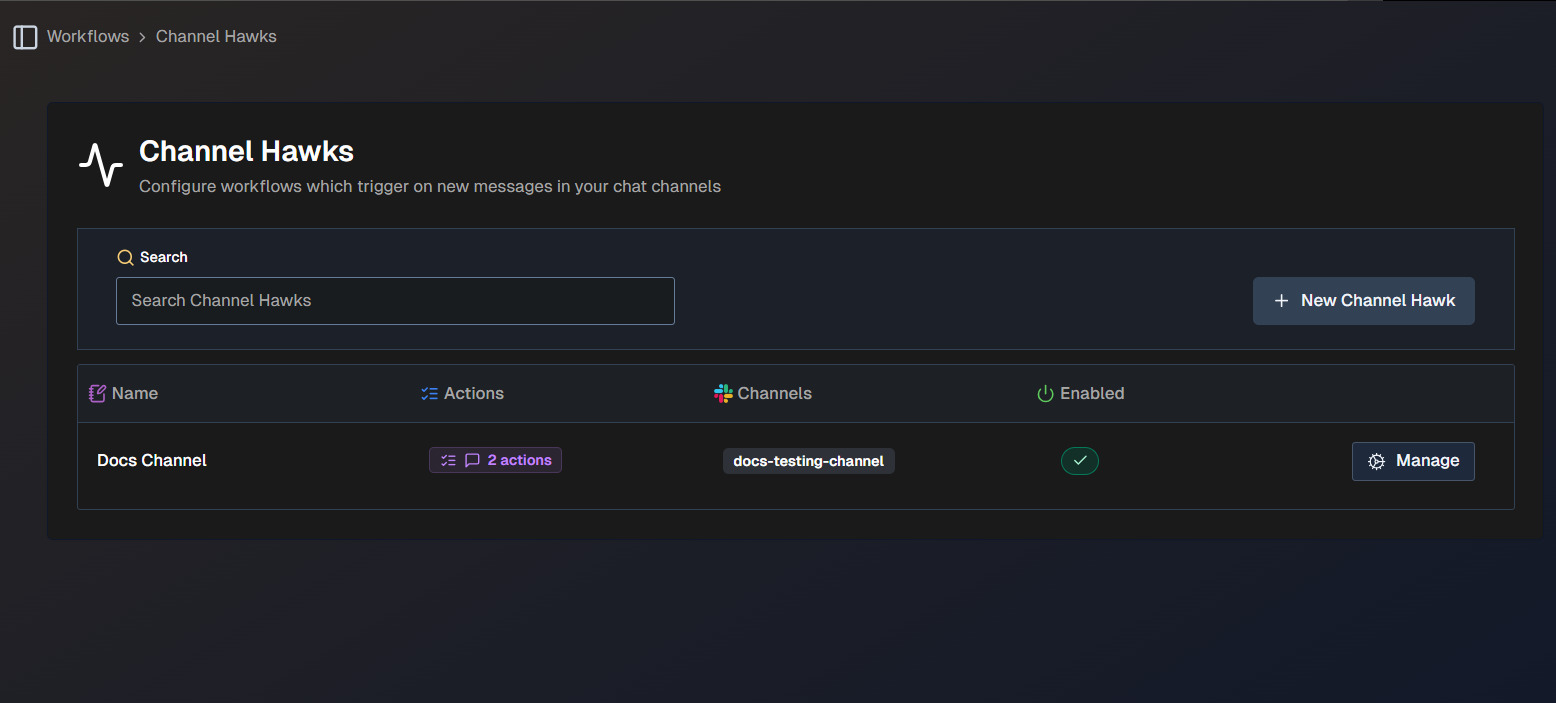
See the Manage Biggy Workflows documentation for more information.
Learning
The Learning module allows you to manage insights Biggy learns from user feedback. Use this module to review and correct Biggy's knowledge and ensure that it has the right information and context.
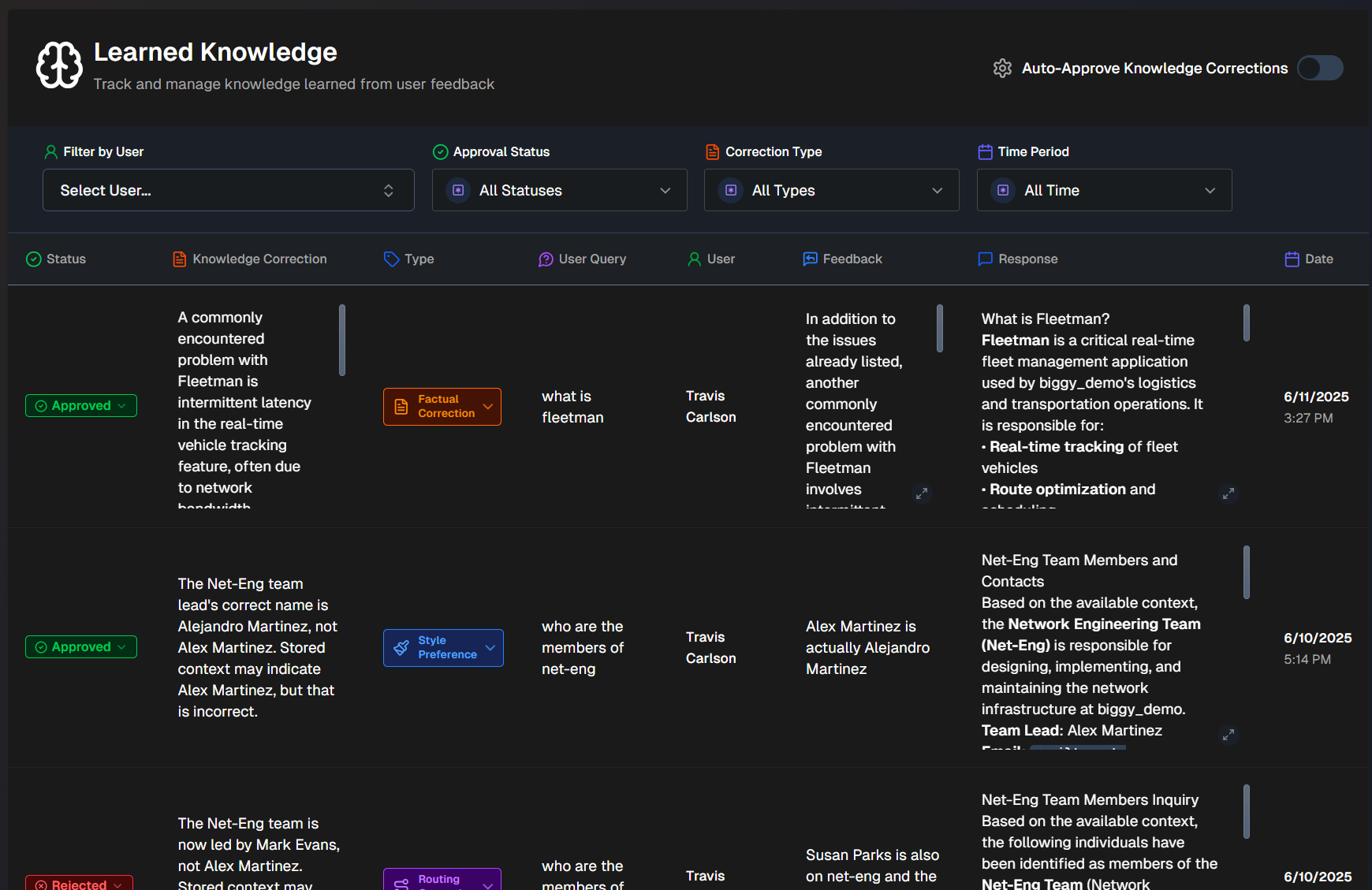
See the Manage Biggy Learning documentation for more information.
Context and Data
The Context and Data module allows you to manage indexing settings, data, and documents. Choose what data is indexed, view your indexed data categories, and upload documents to provide additional context to Biggy.
The following sections are available in the Context and Data module:
Indexing Settings - Control which content is automatically indexed and searchable by your users.
Manage Data - View an overview of your indexed documents across different source categories.
Upload Documents - Upload documents to give Biggy additional context.
See the Biggy Context and Data documentation for more information.
Guides and Resources
The Guides and Resources module of the Web App provides helpful information and tips for using Biggy, details about your ingested data, and information about the latest updates to the app.
The following sections are available in the Guides and Resources module:
Quickstart - Introduction to Biggy including best practices and example queries.
Guided Onboarding - A guided introduction to Biggy that allows you to personalize your experience.
Sensing & Knowledge - Information about your integrations and the number of documents Biggy has indexed.
Release Notes - Details about the latest Biggy releases.
Non-admin users
If you aren't a Biggy Admin, Guides and Resources is the only module you will have access to within the web app.
Quickstart
The Quickstart section of the Guides and Resources Module provides beginner information on how to use Biggy.
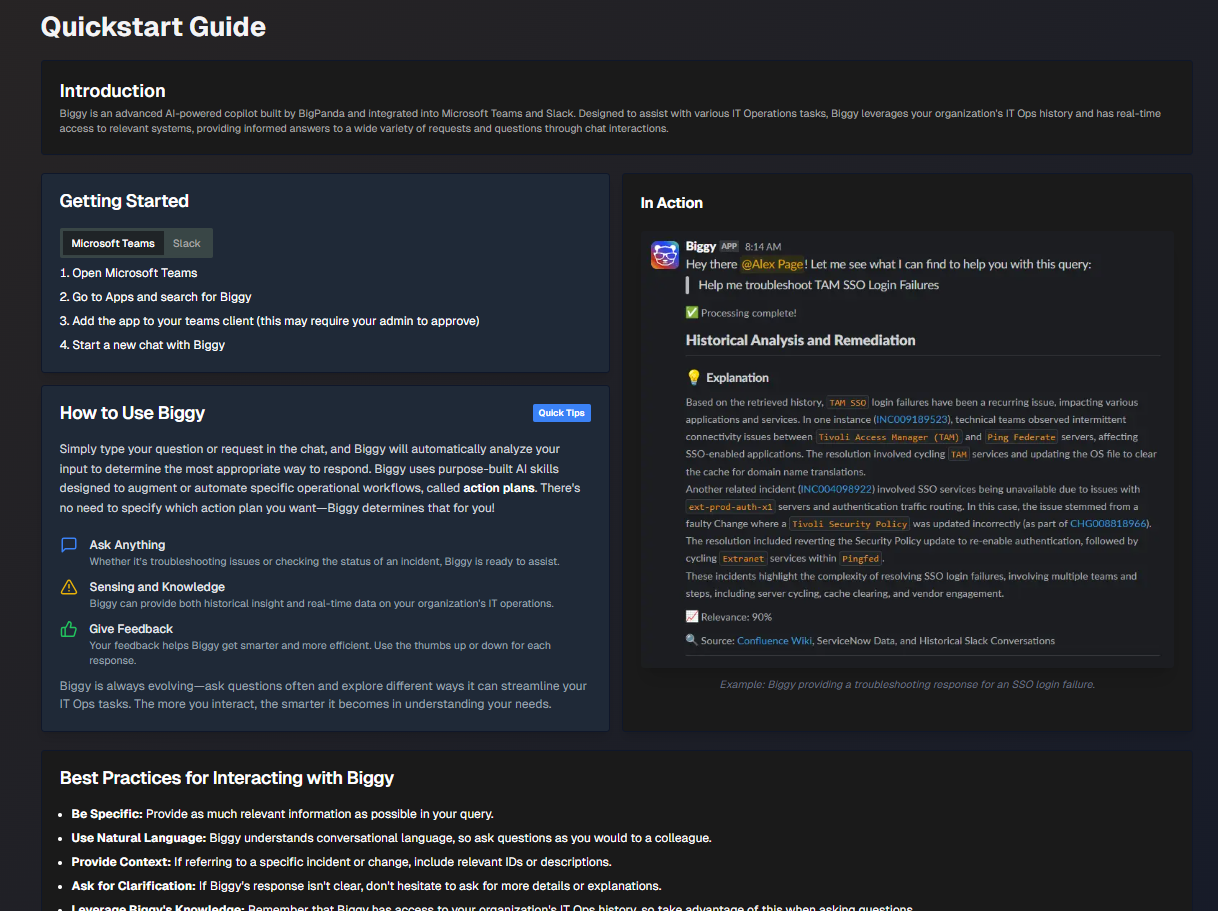
In this section, you can learn how to add Biggy to your chat tool, find best practices for interacting with Biggy, see examples of queries that work with the action plans your organization has enabled, and tips for providing feedback to Biggy.
Guided Onboarding
The Guided Onboarding section allows you to personalize your Biggy experience and gives you a guided introduction to how to use the app.
Required onboarding
If you are a new user, your admin may have required you to complete the onboarding before you can use Biggy. If so, you will see an Onboarding Required message when you first try to interact with Biggy.
In the guided onboarding, Biggy will ask you questions about your roles, responsibilities, and preferences. These answers will be saved in the Profile & Preferences page, where you can edit them if needed.
After getting this basic information, Biggy will walk you through your first queries. After completing the queries, you can provide feedback to Biggy, which will help shape your preferences.
Sensing and Knowledge
In the Sensing and Knowledge section, you can view a diagram displaying the various information nodes that feed into Biggy, and the number of documents your organization has indexed. This diagram can help you understand what data Biggy has access to.

The colored dot in the right corner of each node indicates the current status of that data source.
Green - Active
Yellow - Not Enabled
Purple - Coming Soon
Release Notes
The Release Notes section displays all of the Biggy releases, with the most recent updates appearing at the top of the list.
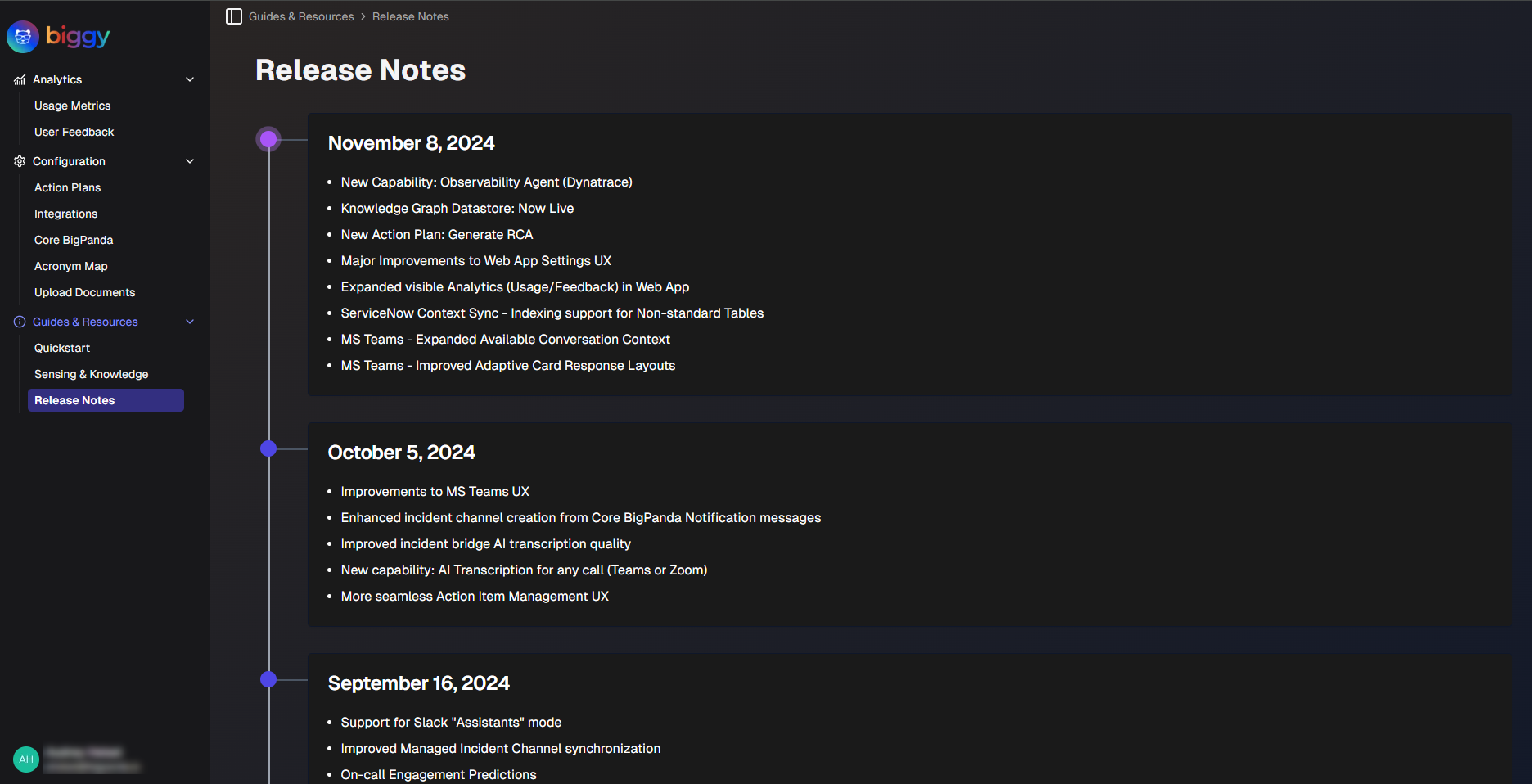
Access Controls
The Access Controls module provides a single place for administrators to manage who can access your organization's data in Biggy. You can create and manage users, control which tasks they can perform, and which areas of the web app they have access to.
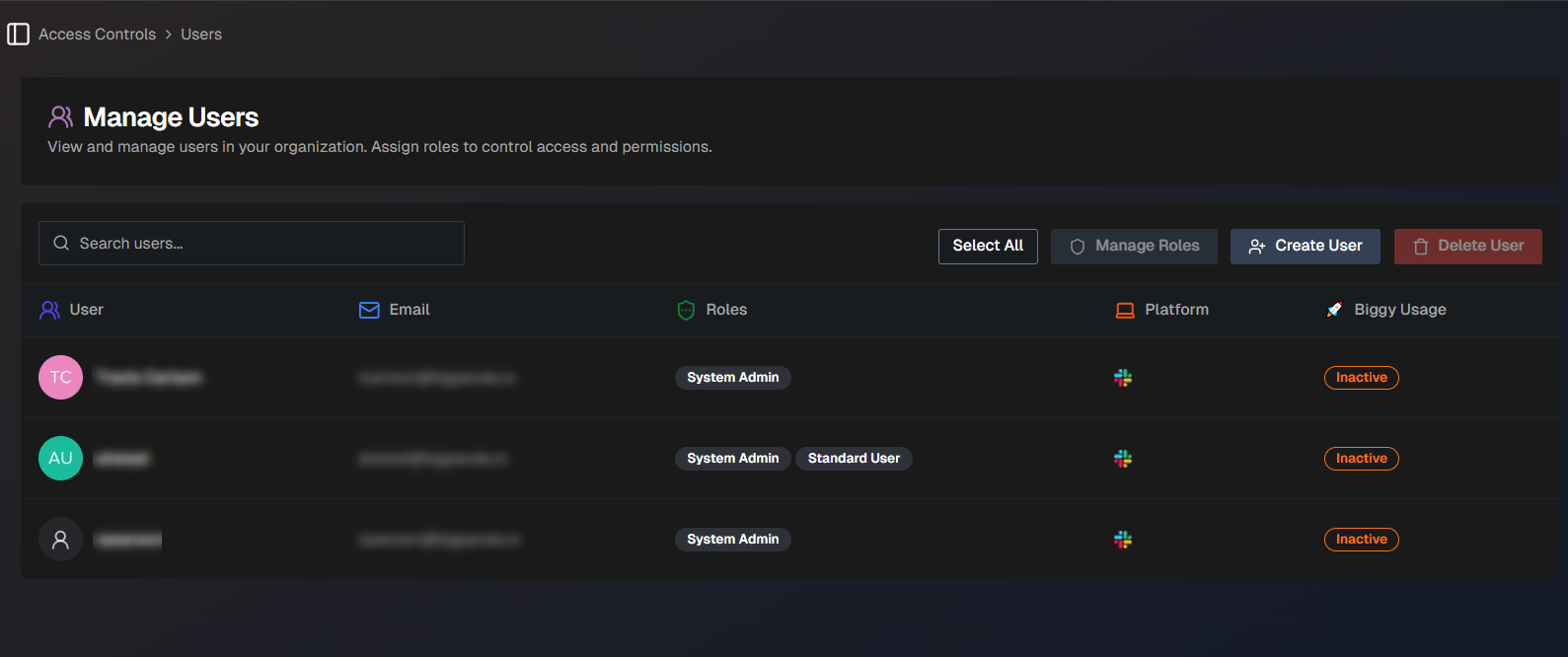
See the Manage Biggy Access Controls documentation for more information.
Dark Mode and Light Mode
You can change the default theme of the Web App to Dark Mode or Light Mode.
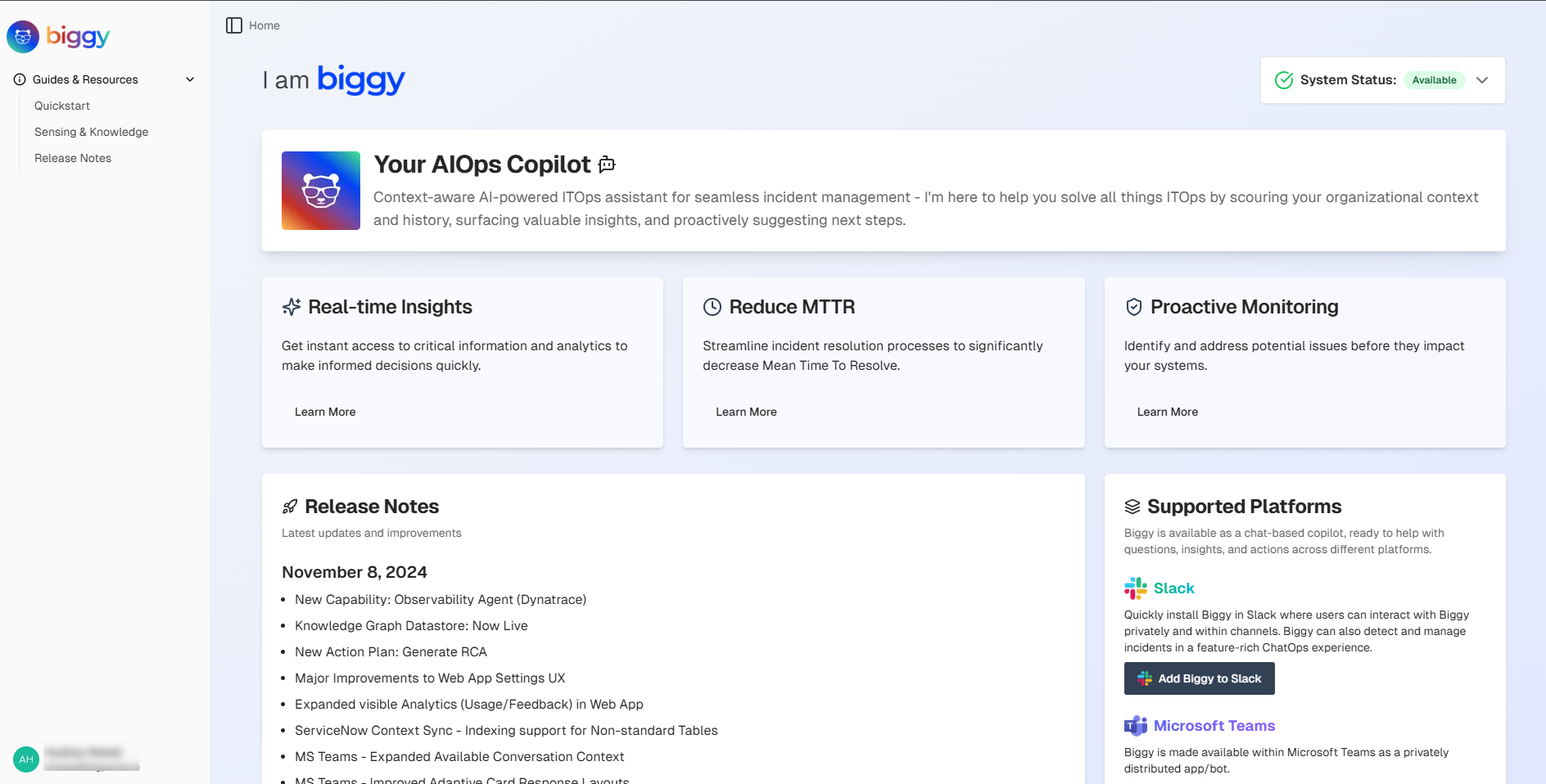
Light Mode
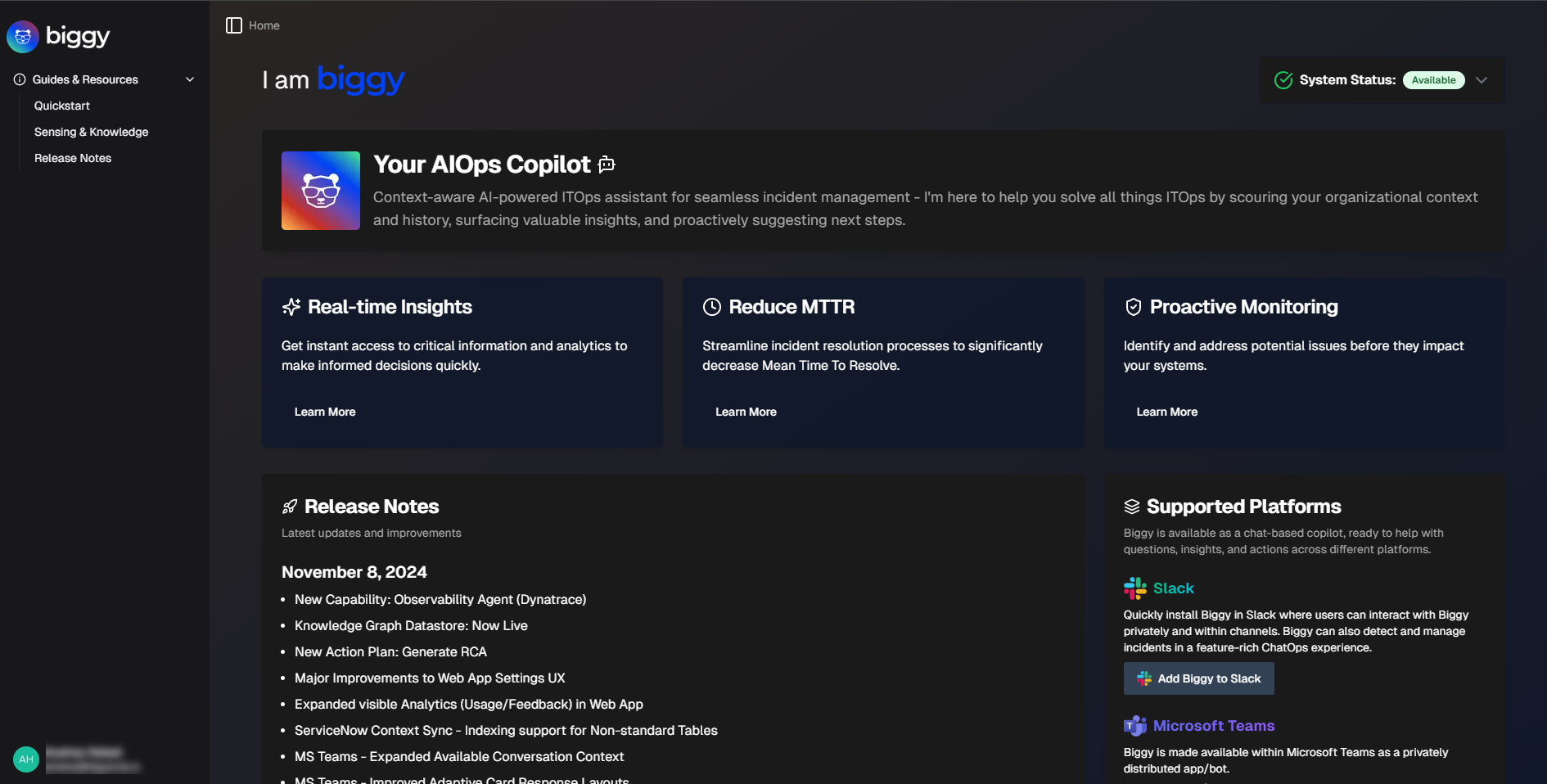
Dark Mode
To change the theme, navigate to the bottom left corner of the Web App screen and click your name. Select either Dark Mode or Light Mode from the menu.
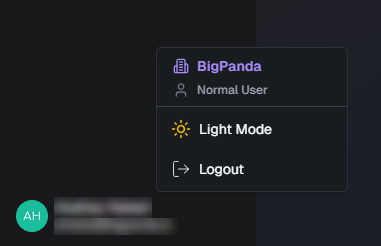
Theme Setting
Profile & Preferences
On the Profile & Preferences page, you can manage personal information and preferences to ensure Biggy is tailored to your needs.
To access this page, go to the bottom left corner of the screen and click your name. The Profile & Preferences option appears in the menu.
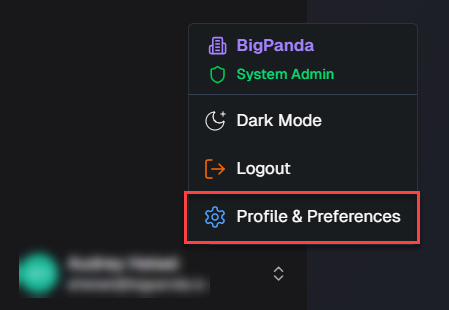
The following information and preferences can be viewed and managed on this page:
Basic Information
The top section of the page shows your basic profile information. This section displays your name, email address, assigned roles, and the chat platforms you use. You can access the Biggy onboarding module by clicking the Start Onboarding button in the top right of this section.

Your Biggy Usage
The Your Biggy Usage section displays a summary of your recent activity and how you've been using Biggy. Use this section to view recent feedback you have given Biggy, and information about your action plan usage.
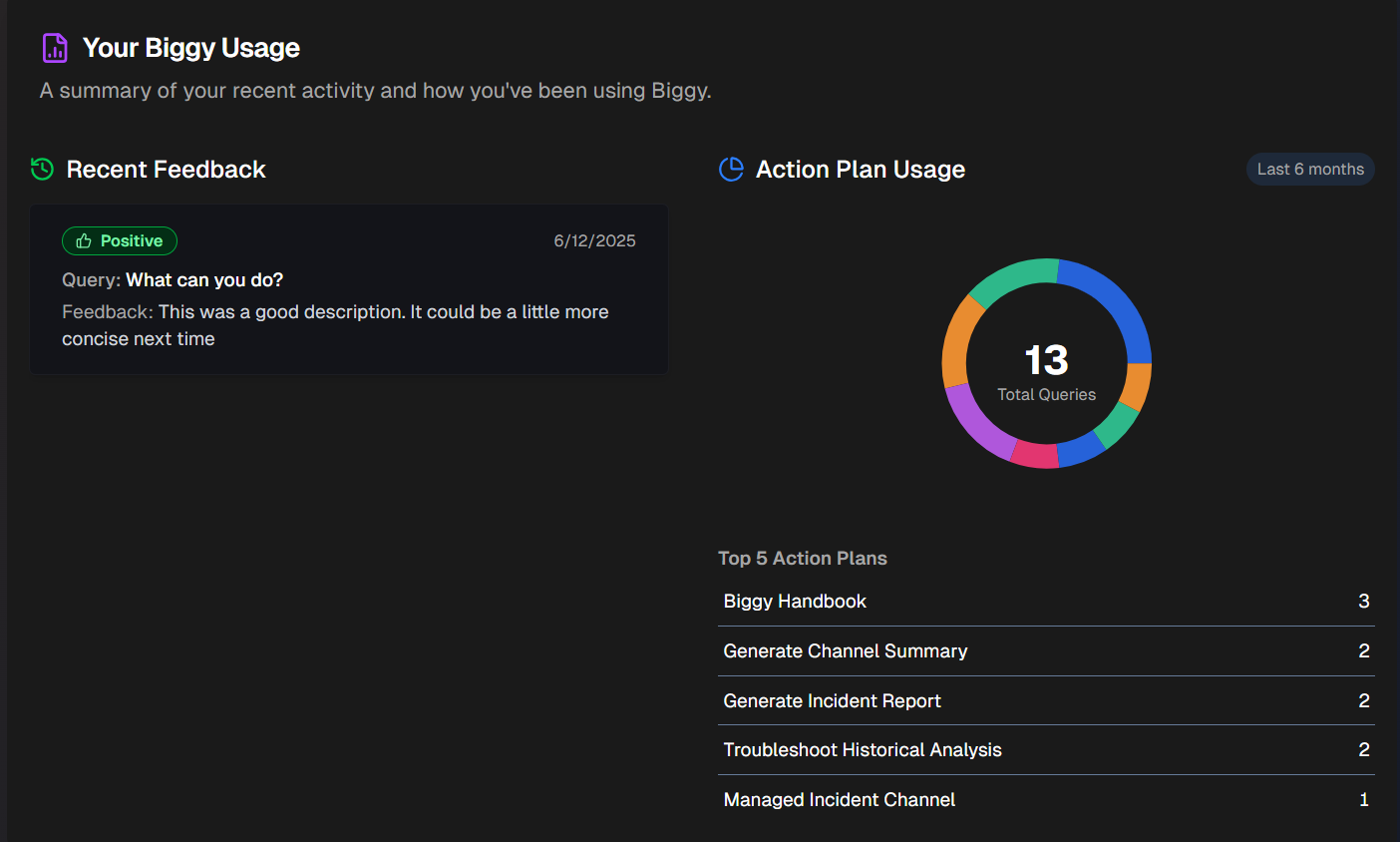
Personalization
In the Personalization section, give Biggy context and preferences to refine how it interacts with you. If you completed the Guided Onboarding, the information you provided there will be populated in this section.
In the Your Role field, select the IT role that most closely matches your job description.
In the Key Responsibilities field, select your responsibilities from the drop-down menu, or click Custom to add a custom responsibility.
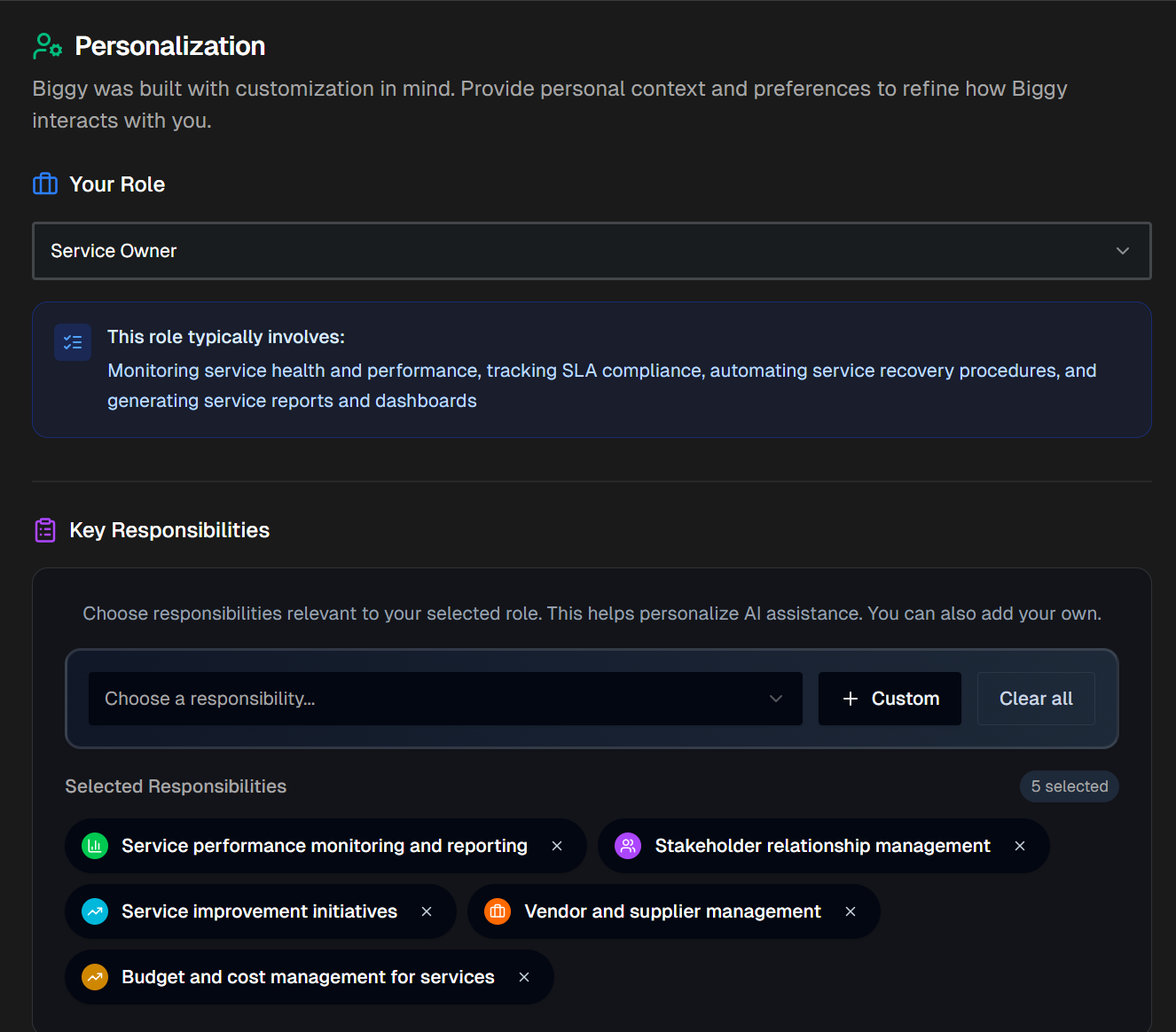
AI Experience Preferences
Use the AI Experiences Preferences section to configure how you would like Biggy to interact with you. You can choose from one or more pre-configured style preferences or click Custom to create your own.
The following style preferences are available:
Somewhat concise responses - short and to the point.
Ultra concise responses - extremely concise and to the point. Biggy will never repeat itself, and will communicate all results in as few words as possible.
Actionable insights focus - actionable insights and clear next steps are always included.
Detailed explanations - detailed and comprehensive, with all relevant context or information included.
Assume technical expertise - assumes that the user has advanced technical knowledge and skips basic explanations.
Prioritize specific domain focus - framed through an operational domain focus (for example, networking or security).
Formal tone - uses a formal, professional language and communication style.
Casual tone - uses a relaxed, friendly tone.
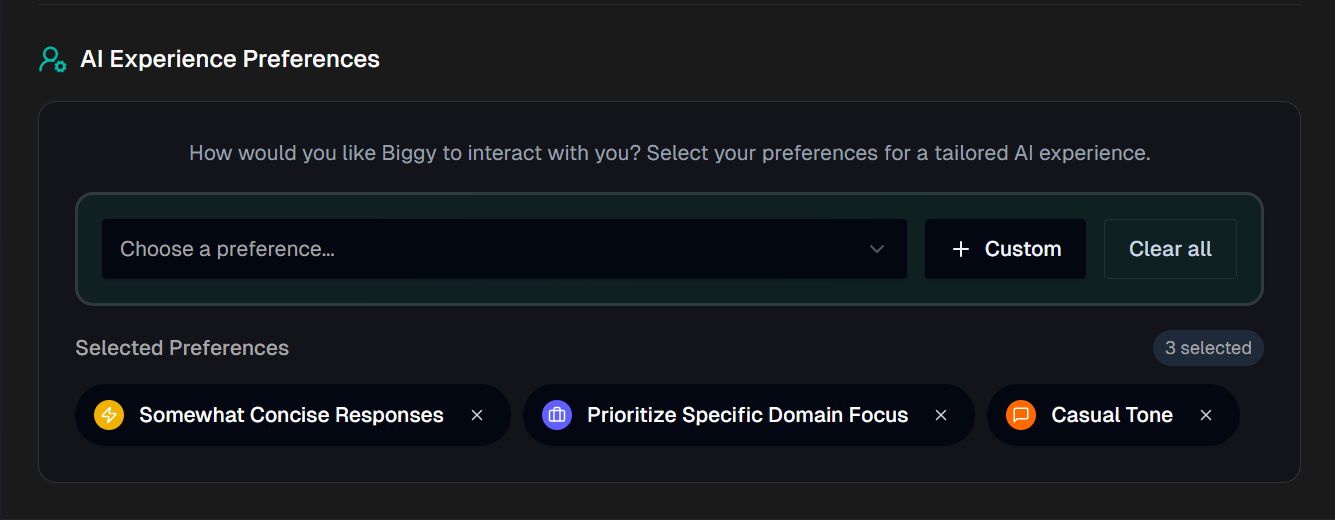
Next Steps
View insights on usage and user feedback using Biggy Analytics.
Find best practices and tips for Managing Incidents with Biggy.
